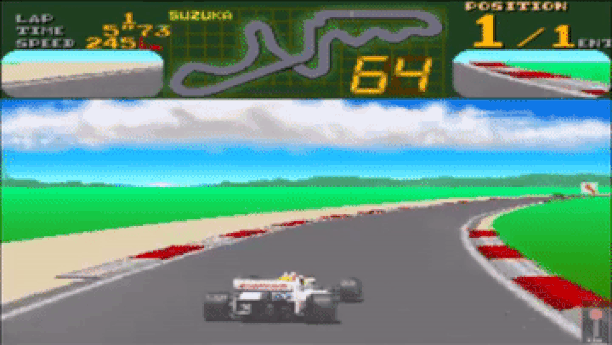F1 Games: What’s the best F1 game of all time? We asked an expert

We asked Keith Collantine, Editor of the hugely popular F1 Fanatic blog and authority on all things Formula 1, to choose his favourite F1 games of all time. Now the F1 2017 season is about to kick-off in Australia, we’re revisiting his picks to get us back into the mood for some F1 action, especially now it’s to be broadcast in 4K.
Related: F1 2017 Game
6. Final Lap (Namco, 1987)
Being an arcade title, Final Lap doesn’t offer anything like the kind of depth found in the other games on this list. Its place here is owed to a fair chunk of nostalgia on my part: I deposited a significant chunk of my pocket money into these machines and this game.
There are two reasons I recall Final Lap so fondly. Japanese publisher Namco lavished attention upon recreating the Honda-powered Williams cars and the Suzuka track, Japan’s new F1 home at the time. Some accuracy was clearly sacrificed to keep punters like myself pumping in the coins: lap times were around a third of what they should have been, but this did heighten the sensation of speed.
More importantly, Final Lap broke new ground by allowing up to eight players to compete at once in their own booth using a steering wheel and pedals. No home set-up could rival that 30 years ago.
5. F1 2013 (Codemasters, 2013)
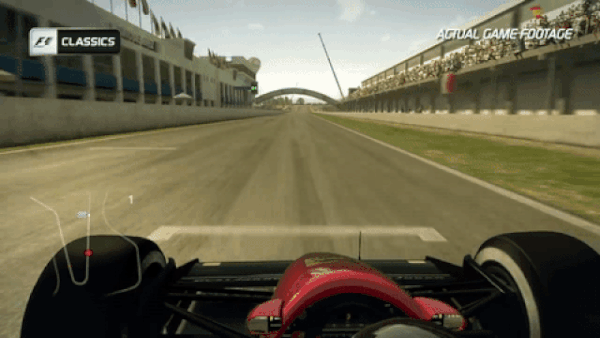
Seeking to inject new life into a franchise which was starting to look rather stale around its fourth iteration, Codemasters added a feature many fans had longed to see in an official F1 game: classic cars and circuits.
Did anyone actually bother playing the contemporary half of the game? Jabbing the DRS button while driving between chicanes at Yas Marina was nothing next to the joy of flinging Ayrton Senna’s Lotus around the curves and crests of Brands Hatch.
The main game offered all the usual detail, including complexities such as the Safety Car and race stoppages, but Classic Mode made F1 2013 an essential purchase for the true fanatic.
4. Grand Prix 2 (MicroProse, 1996)
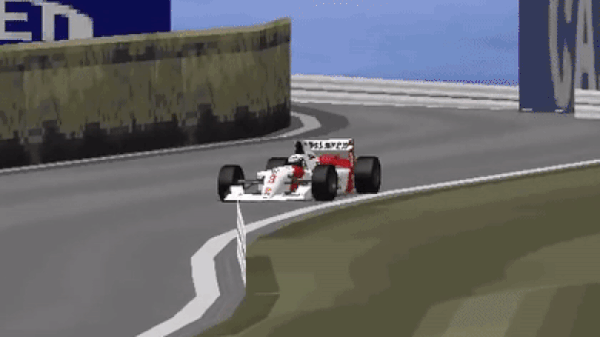
A lesson for modern F1 game makers. The sequel to Geoff Crammond’s seminal Formula One Grand Prix was based on the 1994 season but came out halfway through 1996 so MicroProse could get it spot-on. The delay did nothing to stop it being one of the most revered F1 games ever.
‘GP2’ raised the bar for the level of detail applied to modelling circuits and cars. Its system of driving aids, which could be toggled on and off in the easiest playing modes, cleverly allowed players to enjoy the game to its fullest before they’d mastered the finer points of controlling the cars.
On top of that, action replay mode allowed you to follow a race as if you were watching it on television. This was extraordinarily ambitious stuff for a 20-year-old game which laid the foundations for many of the more realistic racing games which followed.
3. rFactor (Image Space Incorporated, 2005)
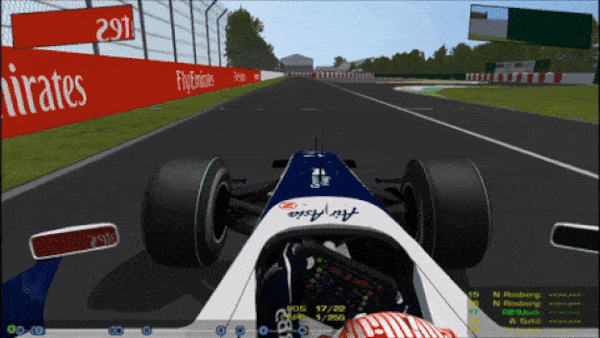
Arguably the first spiritual successor to the ‘Grand Prix’ series, rFactor was based on the isiMotor2 engine, a previous version of which featured in several officially-licensed F1 titles. In rFactor, it was used to superb effect, setting a new benchmark for home racing simulation in areas such as tyre performance.
Despite its lack of an official license, the level of realism offered soon attracted interest from Formula 1 teams, such as BMW, who added its cars to the game. rFactor and rFactor 2 also found their way into ‘racing simulator’ machines and have even been used by F1 drivers to sharpen their skills.
2. Grand Prix Legends (Sierra, 1998)
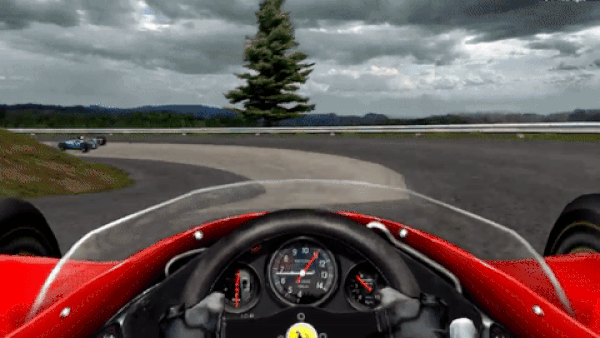
Papyrus, who created Indianapolis 500: The Simulation in 1989 and followed it up with a superb pair of IndyCar games, turned its attention to F1 in 1998, making one significant departure from the norm that attracted the attention of racing enthusiasts everywhere.
Instead of concentrating on the current championship, Papyrus turned the clock back three decades to a time before aerodynamic down force, slick tyres and designated ‘run-off areas’ – in Grand Prix Legends, you got a hay bale if you were lucky and a tree if you weren’t.
The cars looked great and sounded glorious but what made the game itself legendary was its toughness. Even with a decent steering wheel and a good set-up the cars were unforgiving, even on simple tracks like Monza. Completing a single lap of the 23-kilometre Nurburgring Nordschleife – GPL was one of the first games to feature it – was an achievement on a par with completing lesser games.
But Grand Prix Legends was more than just a racing game. It immersed you in a chunk of motorsport history that words, images or video cannot convey. Once you’ve played it, you know anyone who got in those cars and raced on those tracks were all heroes.
1. Grand Prix 4 (MicroProse, 2002)
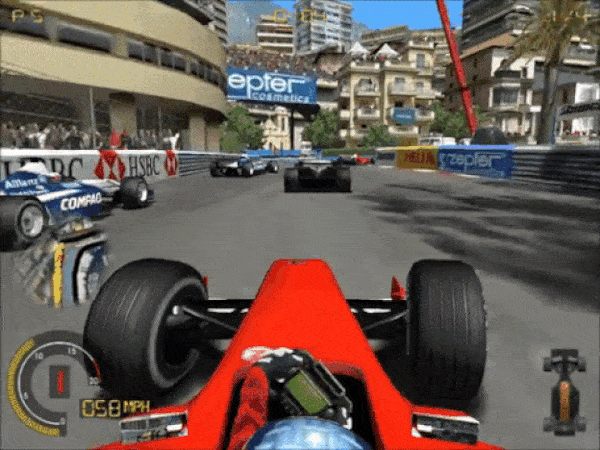
The final title before MicroProse was wound up is one which for many remains unsurpassed by the 14 years of officially-licensed games which followed it. No doubt this is in part due to the extensive restrictions which come with the Formula 1 licence, but it’s also because Crammond understood F1 fans craved more than just a simple racing experience featuring the appropriate branding – they wanted something that pushed the genre forward.
Grand Prix 4 featured individual 3D models for each car, set a new standard for realism in circuit rendering – it was the game that first taught us how narrow Monaco really is – and introduced a truly phenomenal enhanced weather system.
While many familiar features from previous Grand Prix titles remained, Grand Prix 4 was the game that finally suspended your disbelief. Cars failed, parts broke off, rivals spun even on parts of the track you couldn’t see. You weren’t really racing, but it felt like you were.
Ultimately, that’s what you want from a racing sim – and why in my opinion GP4 stands as the best F1 game ever.
Keith Collantine is the editor of Formula 1 blog F1 Fanatic. Is he right? What’s your favourite F1 game? Let is know in the comments below.

